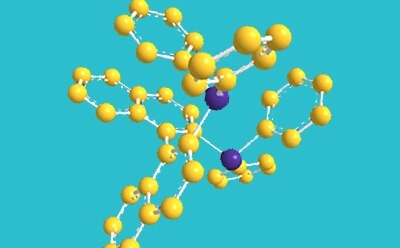Chiral Catalysts & Ligands

The quest for novel, efficient chiral catalysts and ligands for enantiopure molecules is an ongoing endeavor in the pharmaceutical, flavors and fragrances, and agrochemical industries. Nearly 85% of new drugs in the market are chiral. This need has led to developments in asymmetric synthesis of chiral ligands and metal complexes. In 2001, the Nobel Prize rewarded the pioneering work of Knowles, Noyori, and Sharpless in the development of catalytic asymmetric synthesis, highlighting the importance of chiral synthesis in chemistry. With the pioneering work of Noyori in the 1980s with BINAP ligands an era began where catalysts and ligands became more effective and selective. Hydrogenation, hydroformylation, hydroboration, hydrosilation, and cross-coupling are some of the more popular applications using chiral ligands.
Products
Highly effective asymmetric catalytic systems give access to arrays of chiral building blocks used in the synthesis of natural products and drugs. Among the plethora of chiral ligands, a few stand out because of their versatility. The common feature of these “privileged” ligands is their C2 symmetry, reducing the number of possible isomeric metal complexes and the number of different substrates. Among the most recognized family of chiral ligands, BINAP, salens, bisoxazolines, and tartrate ligands represent the original “privileged ligands” classes that affect a wide variety of transformations under outstanding enantiocontrol and with high yield. A second wave of privileged ligands has surfaced with the DuPhos phospholanes, DSM phosphoramidites, Solvias Josiphos families, the Reetz and Trost ligands, and ChiralQuest phosphines. These outstanding ligand families have proven their success in industrially useful reactions such as hydrogenations, aldol reactions, and asymmetric allylic alkylations, and gained much attention from the synthetic community due to their ready accessibility and modular nature of their design.
The majority of chiral catalysts, also known as asymmetric catalysts, are formed from chiral ligands with transition metals. Even at low substrate-to-catalyst ratios, these catalysts are highly efficient, making them excellent synthetic tools, even at industrial scales. There are also numerous metal-free chiral catalysts, such as the MacMillan imidazolidinone organoCatalysts or the proline-based organocatalysts. The MacMillan catalysts are used to catalyzes asymmetric indole alkylations, Friedel-Crafts alkylations, and a broad range of conjugate addition reactions in high enantiomeric excess. Organocatalysis provides convenient methods to construct complex chiral compounds with operational simplicity and without the need for metals. Excellent selectivities are observed in various asymmetric organocatalyzed transformations.
We are committed to providing unprecedented accessibility to chiral catalysts and ligands to make your breakthroughs feel closer than ever. These state-of-the-art “privileged ligands” are used in a wide variety of C–H, C–C, C–N, and C–O bond-forming transformations. For a complete listing of products related to privileged ligands, view our products below, or refer to our organocatalyst or transition metal catalyst pages.
Related Product Resources
To continue reading please sign in or create an account.
Don't Have An Account?